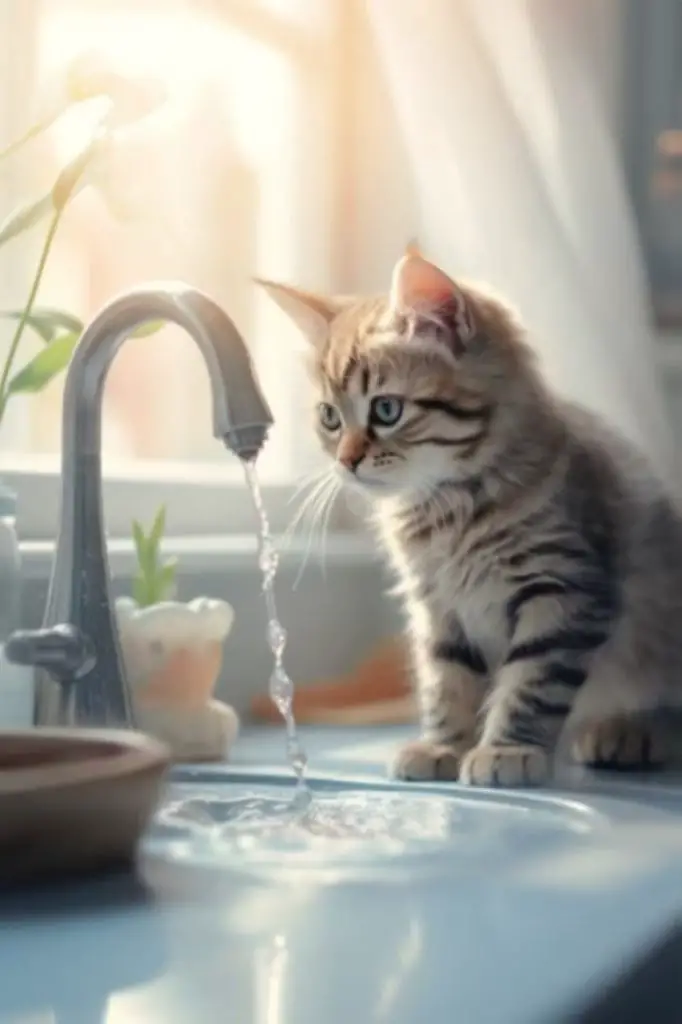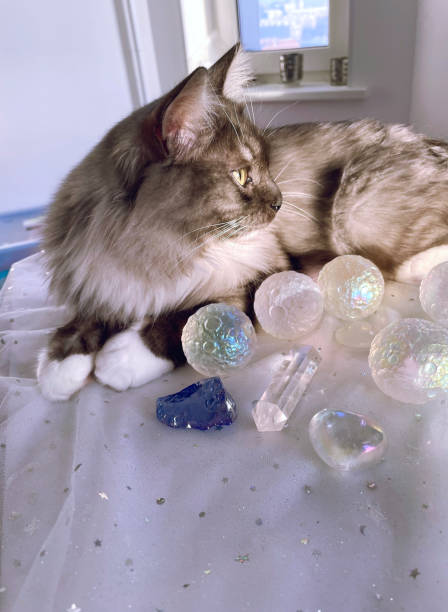
You can get rid of the ammonia smell from cat urine by first neutralizing the affected area with a solution of equal parts white vinegar and water. Blot the stain with absorbent materials, then rinse with cold water to remove urine residue. To break down uric acid crystals, use an enzyme-based cleaner or a mixture of baking soda and vinegar. Eliminating bacteria and odors requires controlling moisture, using antimicrobial solutions, and promoting a dry, well-ventilated environment. By understanding the chemistry behind cat urine odors, you’ll be better equipped to tackle the root causes and find a lasting solution.
Table of Contents
Key Takeaways
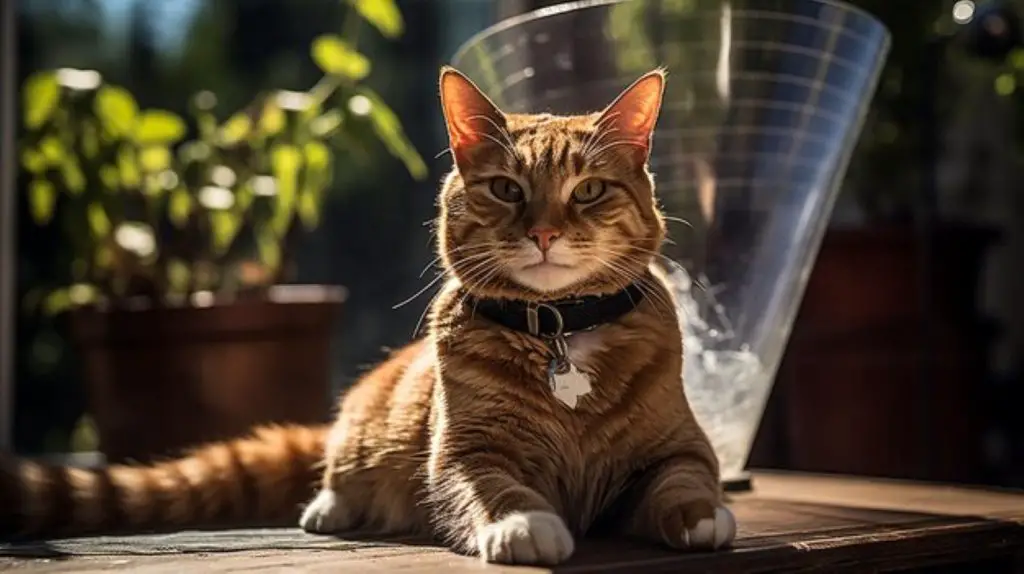
- Blot cat urine stains immediately with absorbent materials like paper towels, avoiding rubbing to prevent damage and deeper penetration.
- Mix equal parts white vinegar and water to break down uric acid crystals, and rinse thoroughly with cold water afterward.
- Use enzyme-based cleaners containing proteases and ureases to target and degrade uric acid crystals, eliminating ammonia smell.
- Apply antimicrobial solutions, such as a vinegar and water mix, to target bacteria that cause ammonia odor.
Neutralize the Affected Area
First, you’ll need to thoroughly rinse the affected area with cold water to remove any remaining urine residue before applying a neutralizing agent. This step is essential in eliminating the ammonia smell from cat urine.
You see, cats have a unique behavior of marking their territories by urinating on surfaces, which can be frustrating for cat owners.
However, by understanding cat behavior, you can take preventive measures to minimize the occurrence of accidents.
To neutralize the affected area, you’ll need to mix a solution of equal parts white vinegar and water. Saturate the area with the solution and let it sit for about 10 minutes.
This post contains affiliate links. However all the information provided on this site are my own honest opinions. See more in Disclaimer.
The acid in the vinegar will help break down the uric acid crystals in the cat urine, eliminating the ammonia smell.
After the solution has sat for the recommended time, rinse the area thoroughly with cold water to remove any remaining solution.
By following these steps, you’ll be able to effectively neutralize the affected area and eliminate the ammonia smell from cat urine.
Remove Excess Urine Stains
You’ll need to remove excess urine stains to eliminate the ammonia smell completely.
Start by blotting the stain with paper towels or a clean cloth, focusing on soaking up as much of the liquid as possible without rubbing the area.
Blotting the Stain
Blotting the stain promptly with absorbent materials is essential for removing excess urine and preventing the ammonia smell from setting in.
You’ll want to use the right blotting techniques to effectively remove as much of the urine as possible.
Start by gently blotting the stain with paper towels or a clean cloth, focusing on soaking up as much of the liquid as you can. Don’t rub the stain, as this can damage the fabric and push the urine deeper into the material.
When blotting, consider the type of fabric you’re working with. Delicate fabrics like silk or wool may require a more gentle approach, while sturdier fabrics like cotton or polyester can handle more pressure.
You may also want to use a clean, damp cloth to blot the stain, as this can help to dilute the urine and make it easier to remove.
Neutralizing Odor Sources

Once you’ve blotted the stain to remove as much of the urine as possible, it’s time to focus on neutralizing the odor sources that can linger in the remaining urine residue.
This is vital in eliminating the ammonia smell, as cat urine contains uric acid and other compounds that can break down into ammonia.
You’ll want to use a cleaning solution that’s specifically designed to target and break down these compounds, thereby preventing further odor absorption.
Understanding cat behavior can also help you identify areas where your cat may have urinated, as cats often return to the same spots to mark their territory.
Look for areas with discoloration or staining, and use a UV light to detect any invisible stains.
Break Down Uric Acid Crystals

As you work to remove the ammonia smell from cat urine, you’ll need to break down the uric acid crystals that contribute to the odor.
Uric acid crystals form when the uric acid in cat urine comes into contact with oxygen, and if left untreated, they’ll continue to emit a strong, unpleasant smell.
You can break down these crystals naturally, but first, it’s crucial to understand what causes their formation and the role enzyme breakdown plays in the process.
What Causes Crystals Formation
Uric acid crystals, the main culprit behind the pungent ammonia smell in cat urine, form when your cat’s body breaks down protein waste, such as urea, and releases these compounds into the urine.
This process occurs naturally, but it’s concentrated when your cat uses the litter box. As the urine sits in the litter, the uric acid crystals start to form and bind with other compounds, creating an ideal environment for crystal formation.
When your cat’s urine is alkaline, it increases the likelihood of crystal formation. This is because the higher pH level allows the uric acid molecules to come together and form crystals more easily.
Additionally, the presence of minerals such as calcium and magnesium in the urine can also contribute to crystal formation.
As the crystals accumulate in the litter box, they release a strong ammonia smell, making it essential to address the issue promptly.
By understanding the causes of crystal formation, you can take steps to minimize the occurrence and reduce the associated odor.
Regular litter box maintenance and a balanced diet for your cat can help mitigate the formation of uric acid crystals.
Role of Enzyme Breakdown
Breaking down uric acid crystals requires the action of specific enzymes that target and degrade these compounds, effectively neutralizing the source of the ammonia smell in cat urine.
You need to understand that enzyme activity plays a significant role in breaking down these crystals, making it essential to eliminate the ammonia smell.
When you apply enzyme-based cleaners, they work by breaking down the uric acid crystals into smaller components, such as carbon dioxide, water, and ammonia.
The ammonia is then converted into a less volatile compound, reducing the overall odor. This process is known as odor elimination through enzyme activity.
Trending in Cats:
To understand how enzymes work, consider the following:
- Enzymes speed up chemical reactions, allowing for faster breakdown of uric acid crystals.
- Enzyme-based cleaners contain specific enzymes that target uric acid, ensuring effective degradation of the crystals.
Removing Crystals Naturally
To remove uric acid crystals naturally, you must first create an environment that fosters the breakdown of these compounds.

This involves introducing the right combination of natural agents that can target and degrade the crystals.
You can achieve this by using natural remedies that contain enzymes, such as amylase, lipase, and protease. These enzymes break down the uric acid crystals into smaller components that can be easily eliminated.
They work by hydrolyzing the crystals, making it easier for them to dissolve and be removed.
In addition to using enzyme-based natural remedies, you can also employ other methods for crystal prevention. For instance, increasing the pH level of the affected area can help neutralize the uric acid crystals, making it harder for them to form.
You can also use natural agents that inhibit the growth of bacteria, which can contribute to the formation of uric acid crystals.
By combining these approaches, you can effectively remove uric acid crystals naturally and prevent their re-formation, eliminating the ammonia smell associated with cat urine.
Eliminate Bacteria and Odors
When tackling the lingering smell of cat urine, you’ll want to focus on eliminating the bacteria that break down the uric acid crystals, as these microorganisms are the primary source of the ammonia odor.
To achieve this, you’ll need to create an environment that hinders bacterial growth and promotes odor prevention. Here are some key considerations:
- Reduce moisture: Bacteria thrive in damp environments. Use fans or a wet vacuum to dry the affected area completely, reducing the likelihood of bacterial growth.
- Increase ventilation: Open windows or use an air purifier to improve air circulation, helping to dissipate any remaining ammonia particles.
Use Enzyme-Based Cleaners
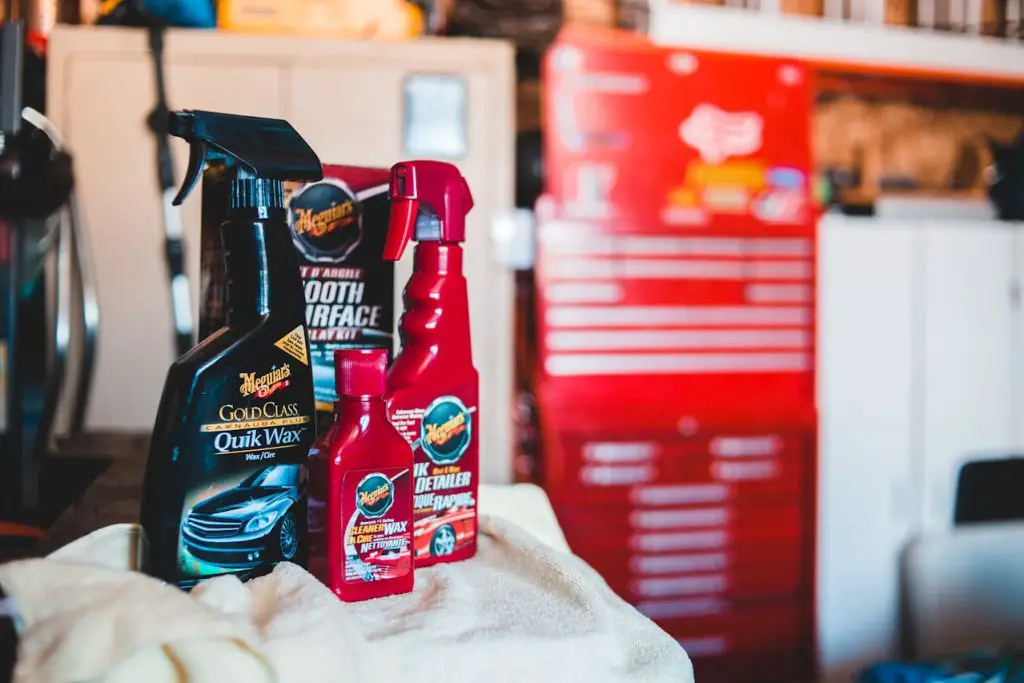
Utilizing enzyme-based cleaners is a crucial step in eliminating the smell of cat urine, as these specialized products contain enzymes that break down the uric acid crystals and proteins in cat urine, rendering them ineffective at producing ammonia.
When you use enzyme-based cleaners, you’re employing different enzyme types to target specific components of cat urine.
These enzymes trigger enzymatic reactions that degrade the complex molecules responsible for the ammonia smell.
You’ll find that enzyme-based cleaners often contain proteases, which break down proteins, and ureases, which target uric acid crystals.
Some products may also include lipases, which degrade fats, and amylases, which break down carbohydrates.
By using these enzyme-based cleaners, you’re fundamentally dismantling the molecular structure of cat urine, making it impossible for the ammonia smell to persist.
To maximize the effectiveness of enzyme-based cleaners, make sure to follow the product’s instructions and take necessary safety precautions.
By doing so, you’ll be one step closer to eliminating the ammonia smell from cat urine for good.
Apply Baking Soda and Vinegar

How does baking soda and vinegar help eliminate the ammonia smell of cat urine, and what’s the most effective way to apply these common household ingredients?
Baking soda benefits from its natural ability to neutralize odors, while vinegar properties include its acidity, which helps break down the uric acid crystals that contribute to the ammonia smell.
When you combine baking soda and vinegar, you create a powerful odor-eliminating solution.
Here are some tips to apply these ingredients effectively:
- Sprinkle baking soda liberally over the affected area, making sure to cover all surfaces evenly.
- Mix equal parts water and white vinegar in a spray bottle, and spray the solution over the baking soda.
Dry and Disinfect the Area
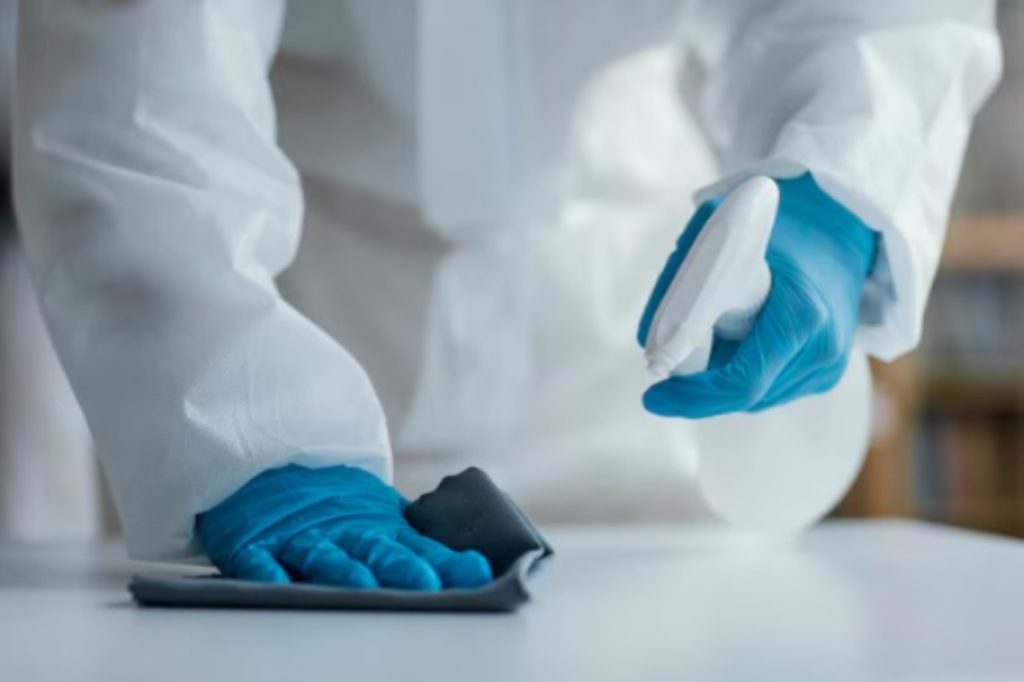
With the ammonia smell neutralized by the baking soda and vinegar solution, you can now focus on drying and disinfecting the area to prevent bacteria growth and eliminate any remaining odors.
To dry the area, use a clean towel or a wet/dry vacuum to remove any remaining moisture. If the affected area is a carpet, you may need to use a fan or a hair dryer on a low setting to speed up the evaporation process.
Once the area is dry, apply a disinfectant to kill any remaining bacteria and prevent future odor growth. Be sure to follow the disinfectant’s instructions for proper use and take any necessary safety precautions.
Employing effective cleaning techniques in this step is vital to guarantee thorough odor prevention and maintain a clean environment for your cat. Regular and thorough disinfection will keep bacteria at bay, safeguarding against the return of ammonia smells.
Frequent Questions and Answers
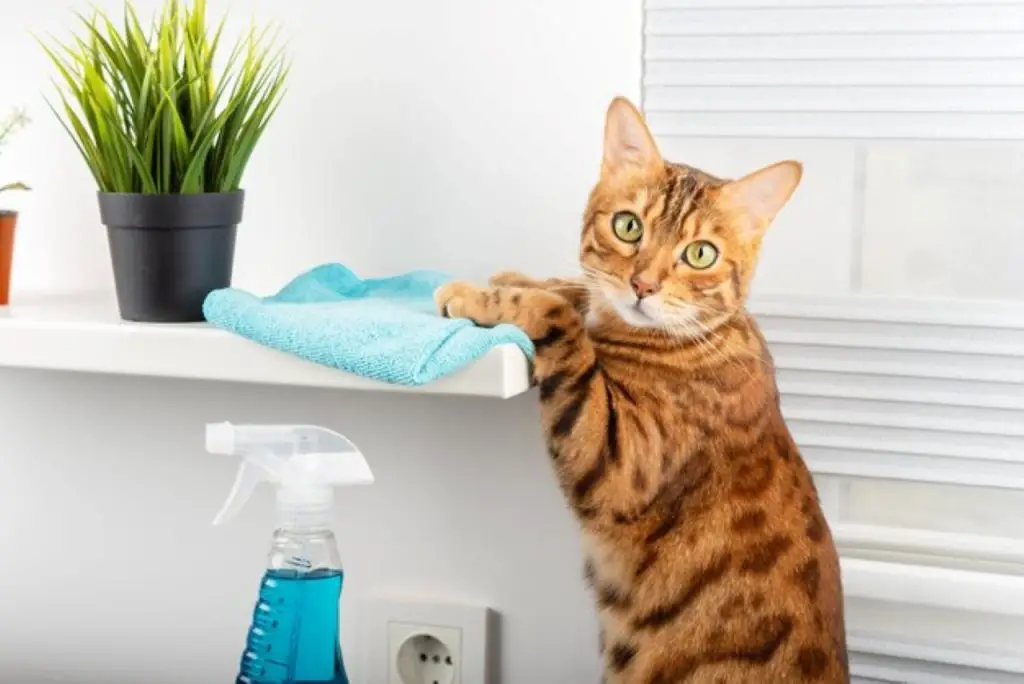
You’re exposed to ammonia toxicity from cat urine, which can cause health effects like respiratory issues, headaches, and eye irritation; prolonged exposure can lead to more severe conditions, so it’s essential you address the issue promptly.
Coincidentally, as you ponder this, your cat may be exhibiting litter box issues, and you’re wondering why. You’ll notice subtle behavioral changes, such as avoiding the litter box due to stress, medical conditions, or territorial marking, prompting them to urinate elsewhere.
You can prevent cat urine accidents by prioritizing litter box maintenance, including daily scooping and regular changing of litter, and investing in behavioral training to address underlying issues that may be causing your cat to urinate outside the box.
You’re likely no stranger to strong household cleaners, but ironically, using bleach to remove cat urine smell can be a hazardous mistake; instead, opt for safer odor neutralizers that prioritize bleach safety and effectiveness.
You’ll find that cat urine smell can persist due to feline scent markers, making it challenging to completely eliminate. The smell may fade over time, but it’s unlikely to completely go away without targeted cleaning and neutralization efforts.
Final Thoughts

You’ve conquered the battle against the pungent ammonia smell of cat urine. The affected area, once a symbol of frustration and defeat, now stands as a demonstration of your perseverance and cleanliness.
The uric acid crystals, once stubborn and unyielding, have been broken down, and the bacteria that fueled the odor have been eliminated.
With enzyme-based cleaners and the mighty duo of baking soda and vinegar, you’ve reclaimed your space and restored balance to your domain.


